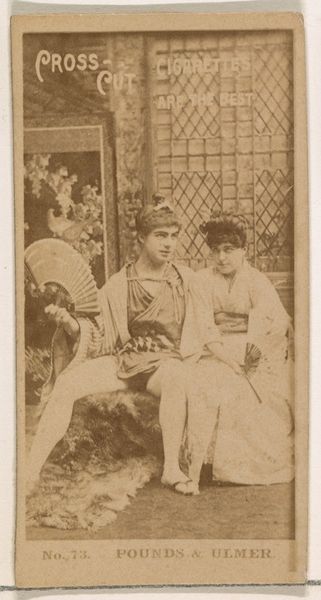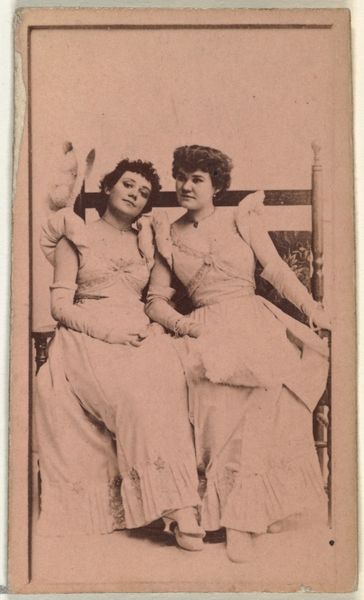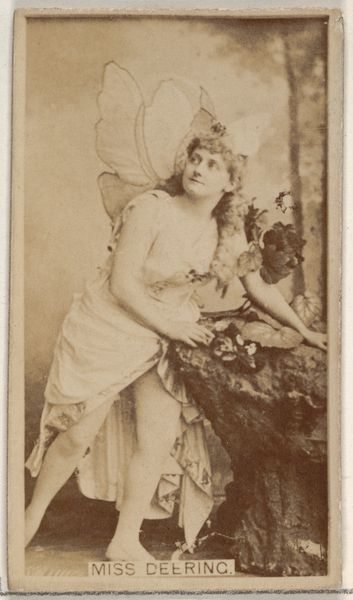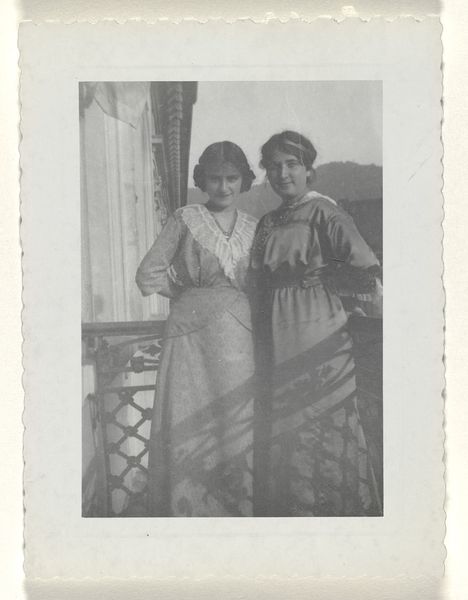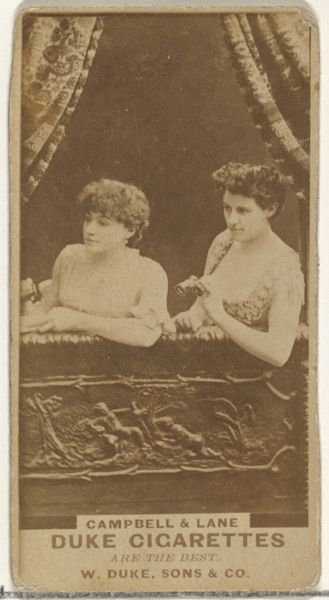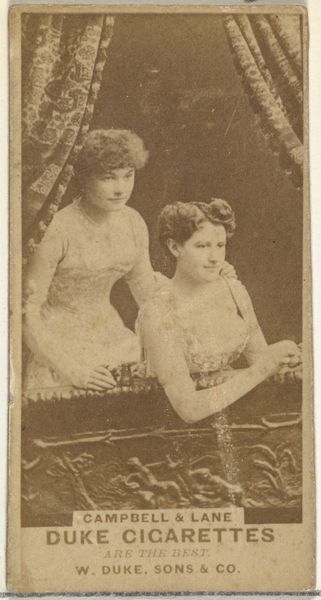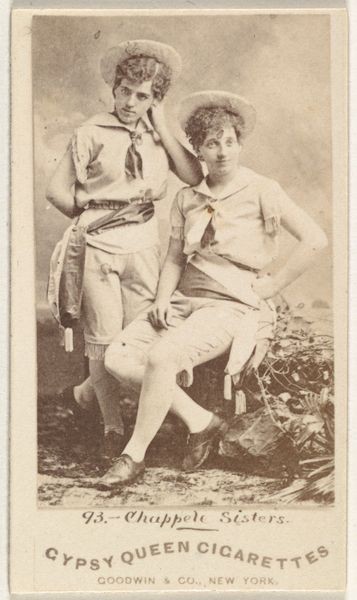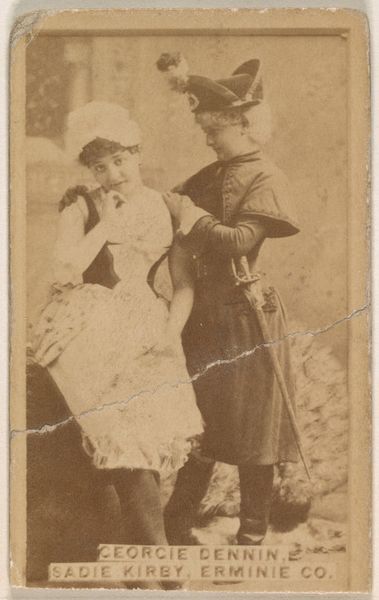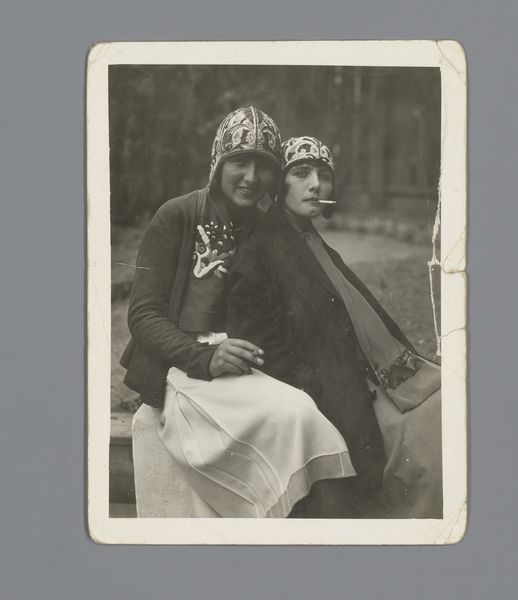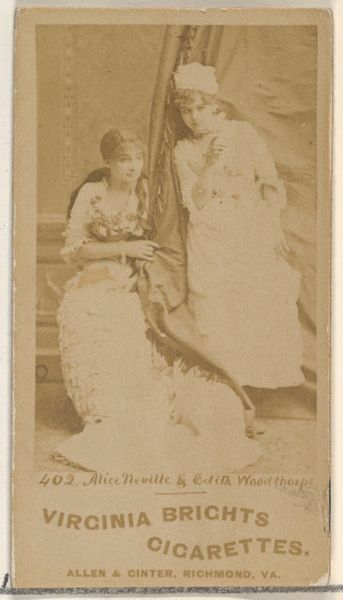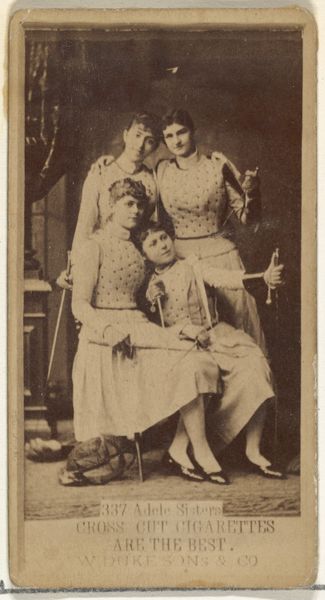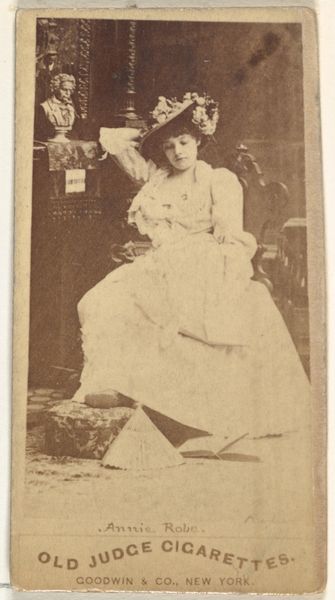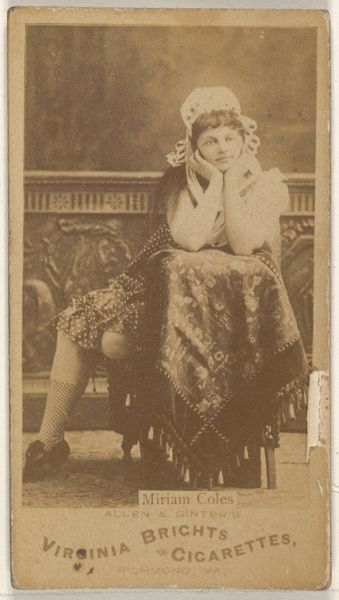
Card Number 183, Pounds and Ulmer, from the Actors and Actresses series (N145-6) issued by Duke Sons & Co. to promote Duke Cigarettes 1880s
0:00
0:00
drawing, print, photography
#
portrait
#
drawing
# print
#
photography
#
orientalism
#
men
#
genre-painting
Dimensions: Sheet: 2 11/16 × 1 3/8 in. (6.8 × 3.5 cm)
Copyright: Public Domain
Curator: This is card number 183 from the Actors and Actresses series, issued by Duke Sons & Co. in the 1880s as promotional material for Duke Cigarettes. Titled "Pounds and Ulmer," it’s an albumen print, a very common photographic process during that period, depicting two performers in costume. Editor: Okay, immediate impression? Staged Orientalism vibes, all sepia-toned and fan-fluttery. A bit awkward, but not without a certain old-timey charm. Are they supposed to be geishas? It's definitely a theatrical interpretation. Curator: Indeed. The aesthetic draws heavily from Western fantasies of the "Orient," common in late 19th-century popular culture. These cards were collected and traded, so understanding the cultural context is key: What ideas about Asia were being circulated, and how did advertising contribute to that? Think about gender, too—how are these performers embodying or perhaps subverting those fantasies? Editor: Subversion might be a stretch. But I get your point. It's like… they're playing dress-up in someone else's culture, through the lens of another culture that's already pretty distorted. Gives you that weird, slightly uncomfortable feeling, you know? It’s not their story, but they're performing it. I bet these cards made smoking cigarettes feel exotic and exciting, somehow. Curator: Precisely. The commodification of exoticism intertwined with leisure. And the power dynamics are fascinating when considering that Duke was building a tobacco empire during a time of immense global colonial exploitation. Editor: So, a tiny sepia-toned card is a loaded object. Makes you think about who is seen, who gets to see, and what story they’re selling. The past feels much closer now. And my desire for a smoke much weaker. Curator: I concur. It's a powerful reminder to analyze the seemingly innocuous artifacts that shaped societal attitudes. Art objects often reflect not just the dominant narrative, but also hint at what's being silenced or obscured. Editor: Makes you wonder what folks will say about *our* cigarette ads a century from now, right? A bit terrifying.
Comments
No comments
Be the first to comment and join the conversation on the ultimate creative platform.
